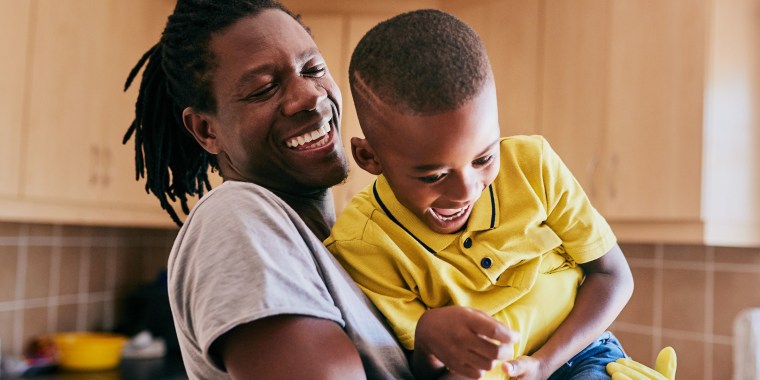During the pre-kindergarten years, children are learning very quickly. While children at this age may have short attention spans, they often learn best by being read to, playing pretend and observing others, especially you. By setting a strong example, you can show your child how to be socially and emotionally intelligent.
Part of self-management is simply learning acceptable behavior
Help your child learn what is expected of him by giving clear directions. For example, instead of saying, “Please clean up your toys,” say, “Please put your toy trucks into the red bin, and your book on the shelf.” By explaining exactly what your child should do, you’re giving him concrete examples of what you expect. “Clean up your toys” can mean different things to you and your child, and if your child doesn’t understand yet what that means it can be confusing and lead to frustration for both of you. New York City-based teacher Anne Morrison suggests also telling your child why we do certain things. For example, “Please put your toys in the red bin and your book on the shelf so that you will be able to find them easily and your room will look nice and clean. Thank you for being so helpful!”
Help your child learn routines
You can help your child learn routines by making a poster together or drawing on a dry erase board what each day looks like. Draw a picture of eating breakfast, brushing teeth, going to school, picking up toys, eating dinner, brushing teeth, and going to sleep. Neurologist and teacher Judy Willis recommends increasing your child’s investment in the routine by offering choices during some of the actions. For example, “Which would you rather do first, brush your teeth or put on your pajamas?” Hang the picture or poster where your child can see it. Put a sticker or star next to the activity each time your child completes it. This is a great way for your child to learn self-management through routines and also work on early goal-setting.
Teach your child to blow bubbles as a way to manage anger or stress
First, blow bubbles with your child when they are not upset. While blowing bubbles, talk about how the next time your child is upset or mad your child can blow imaginary bubbles to make themselves feel better. In the moment, remind your child by saying, “Why don’t you blow bubbles to calm down?” instead of just, “Calm down!” By giving your child a tool to calm themselves (breathing deeply by “blowing bubbles”), you’re teaching her coping strategies for dealing with emotions rather than inappropriate strategies like throwing a tantrum or acting out.
Never underestimate the power of your influence on your child
Your child learns a lot from you and will often copy your actions. Try to manage your emotions as much as you are able. If you’re upset or frustrated, it’s O.K. to take a break and step away from the situation for a time to let yourself cool down. Try to talk through your feelings and calming strategies with your child, too. When stuck in traffic you could say, “I’m so frustrated by this traffic jam and I’m worried we’re going to be late. I’m going to take some deep breaths and count to ten instead of blowing my horn or yelling.” This will show your child that everyone has feelings and behaviors they have to control.
Teach your child to apologize
Children are not always going to be able to control their feelings and behavior. By giving your child a tool or technique for when they hurt someone’s feelings or behave inappropriately, you’re teaching an important skill they can turn to throughout their life.
Make a "keep calm" area in your home
It is a place where your child can go when they need to take a step away and calm down. Rutgers Social-Emotional Learning Lab Director Dr. Maurice Elias suggests that it not be away from everyone or everything, but simply a comfortable area and clearly marked. Elias says some parents get a small square of carpet to put in a corner of a room, with a pillow or stuffed animal. This is especially useful when your child has a tantrum. Asking him or her to go to the “keep calm” area can make the tantrum less serious. The “keep calm” area can also serve as a source of security: if your child knows there’s a place to go to calm down and they can leave as soon as they feel better.
To learn more about self-management for your child, check out our pre-K self-management page.
Parent Toolkit resources were developed by NBC News Learn with the help of subject-matter experts, including Maurice Elias, Director, Rutgers Social-Emotional and Character Development Lab and Anne Morrison, Pre-Kindergarten Teacher, Lycée Français de New York.
